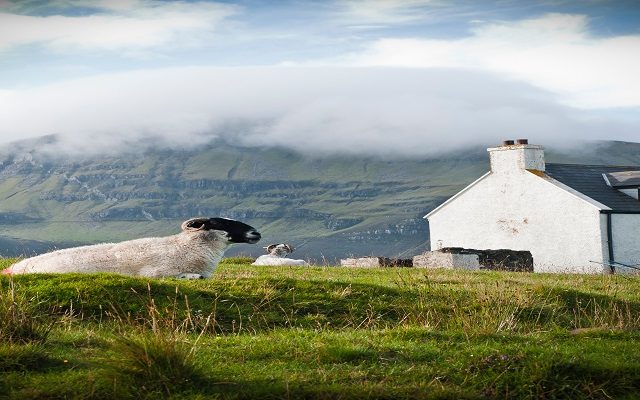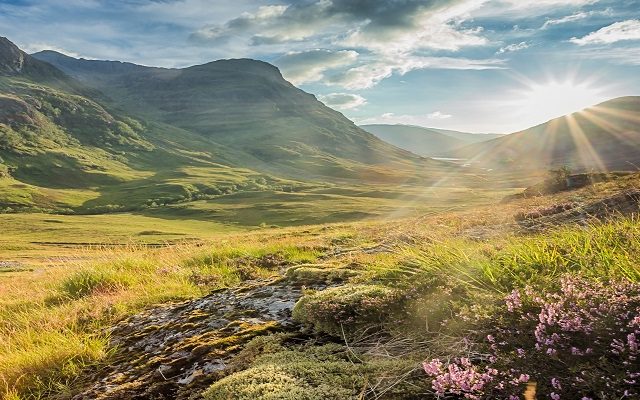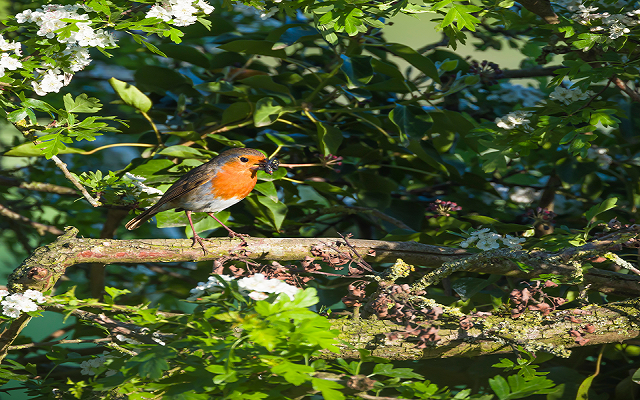What the low-carbon farming agenda means for farms and rural estates
Climate change and agriculture are inextricably linked, so how will landowners meet the challenge of low-carbon, environmentally-friendly farming and still thrive?
Farmers and land managers are on the front line in more ways than one when it comes to dealing with climate change.
In tandem with the challenges that extreme weather events, such as heatwaves and floods, present to their businesses, they are under ever-closer scrutiny, with the sector a net contributor to climate change.
With agriculture estimated to account for about 10% of total UK greenhouse emissions, a series of heavyweight scientific reports, most recently from the Committee on Climate Change (CCC) and the Intergovernmental Panel on Climate Change (IPCC), have sparked debate about land use.
Their message is that it’s no longer enough to cut greenhouse gas emissions, there’s a need to lock up the carbon dioxide already in the atmosphere. In short, we need to reduce emissions and ensure land becomes a more effective carbon store.
Land use changes
James Farrell, Head of Rural at Strutt & Parker, says demands for land use changes are challenging for an industry already facing significant Brexit-related uncertainty, but feels strongly they cannot be ignored.
‘There isn’t an option any more of sitting on the sidelines and thinking is, or isn’t, it happening. The overwhelming balance of the argument has tipped.’
Shifts in farming and land management practices are inevitable, suggests Farrell – although not solely because of climate change.
‘What we see is a perfect storm of factors coming together which will be transformational. There’s Brexit, of course, but also issues such as concern about land degradation, biodiversity, antibiotic resistance, food security, plus the agenda around improving health and wellbeing.’
So what does this mean in practice for farms and rural estates?
In June 2019, the government committed the UK to net zero carbon emissions by 2050 – the first major nation to bring forward legislation to enshrine this target in to law.
According to the CCC, meeting it will require fundamental land use change. It wants to see a massive increase in tree planting, improved forestry management, restoration of peatlands and a shift to low-carbon farming practices.
Livestock emissions
Controversially, the CCC argues that there needs to be a significant shift in diets away from beef, lamb and dairy and a switch to poultry, pork and plant-based foods such as legumes and pulses. This would facilitate a reduction of up to 4.5m ha of grassland and rough grazing, which could enable the establishment of up to 1.5m ha of new woodland to store carbon by 2050, along with up to 1.2m hectares for bioenergy crops.
It’s a point fiercely contested by farm leaders who argue it’s a mistake to design a nation’s agricultural system solely around an approach that cuts greenhouse gases without regard to the wider environmental benefits of grass-fed beef and sheep.
Minette Batters, president of the National Farmers’ Union, argues that critics fail to acknowledge the carbon footprint of UK cattle is two-and-a-half times lower than the global average. Animal products also play an important role in a balanced diet.
‘This is absolutely the right time for the country and our sector to set ourselves challenging goals,’ she says of the NFU’s aim to reach net zero greenhouse gas emissions across the whole of agriculture in England and Wales by 2040.
‘But we firmly believe that we will not tackle climate change by downsizing agricultural production at home and exporting our emissions to other countries who may not have the same high standards of environmental protection, or the same ambition to reduce their climate impact.’
Efficiency gains key
Will Gemmill, Head of Farming at Strutt & Parker, is convinced there will always be demand for meat and dairy products, but innovative methods need to be developed to help produce them more sustainably and in line with consumer trends.
‘We still have a growing global population and a lot of hungry mouths to feed, so we mustn’t lose sight of that, but we have to produce food as efficiently as we can along the whole supply chain and significantly reduce food waste.’
Possible options for the red meat sector include introducing changes to animal diets which lead to a reduction in methane emissions, or greater uptake of systems with high welfare and environmental credentials which command a premium price.
With the concept of carbon-offsetting air travel becoming increasingly mainstream, this raises the question as to whether similar initiatives could be introduced for those who wish to eat meat, but might be concerned about its environmental impact.
Arable rotations
Arable farms may need to concentrate their production on their better land, taking unprofitable parts of their farm out of production and entering them into the new Environmental Land Management Scheme (ELMS), he says. Financially this will make greater sense as subsidy payments fall away.
Growers may also need to widen their rotation, to build in environmental measures, so they become an annual ‘crop’ much like wheat, barley or oilseed rape.
More generally, farms and estates will need to reduce their carbon footprint through further investment in renewable energy projects.
Private investment
Farrell says the funds on offer through ELMS will be vital in terms of driving change, but the biggest opportunity for landowners may be in unlocking money from the private sector. Landowners, for example, could monetise tree planting and peat restoration work by selling the carbon sequestered in them in the form of credits.
Large corporations are increasingly coming under pressure from legislators and customers to offset their carbon output, so this is an area with potential. Selling the rights to the carbon captured by woodlands through the Woodland Carbon Code (WCC) would provide a new income stream for landowners – either as a one-off lump sum or a long-term revenue stream, potentially supplementing other income from timber, woodfuel and sporting activities.
Biodiversity offsetting
Biodiversity offsetting is another financial opportunity, involving landowners being paid to manage ground in a way that supports wildlife to offset the impact of residential and commercial developments elsewhere.
While addressing climate change is not the primary objective, protecting and restoring ecosystems in this way could help society cope with its impact, as biodiversity and climate are closely interrelated.
The government has already announced it plans to make biodiversity net gain a mandatory part of planning policy as part of the Environment Bill.
‘Confident’
While the drive to low-carbon farming clearly presents huge challenges, Farrell is confident that farms and rural estates willing to adopt new approaches will flourish.
‘The changes that are needed will vary across the country, as solutions will need to be implemented at a local level,’ he says. ‘Some estates will find it relatively easy and others very tough. But rural estates have been around for a long time because they are innovative and adaptable and, if they continue to be open to change, then I have no doubt they will continue to thrive.
‘If landowners respond to this agenda positively, this is a chance to engage the public in a once-in-a-generation way, reminding them of the positive contribution rural estates can bring to society.’
This is an abridged version of an article that appeared in the Autumn/Winter 2019 issue of Land Business. For the full story visit Land Business Autumn – Winter 2019
You can also discover more about the implications for land use on the drive for net zero carbon emissions at: struttandparker.online/zero-challeng






